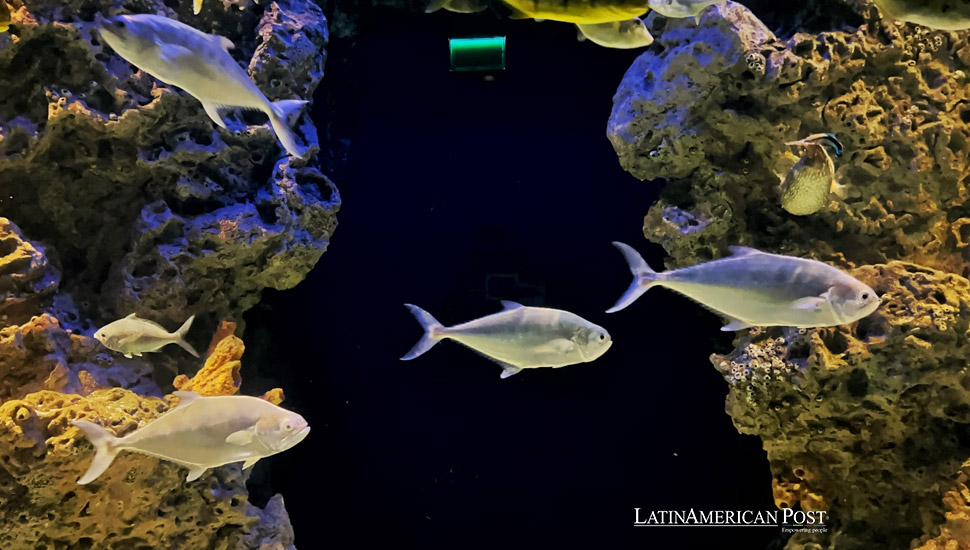Latin America’s Marine Protected Areas Aid Sustainable Fishing

A new study reveals that when managed collaboratively with local communities, Marine Protected Areas (MPAs) can benefit environmental conservation and artisanal fishing. Spanning countries across Latin America, these areas offer lessons in sustainable development and marine resource protection.
A Collaborative Approach to Conservation
Marine Protected Areas (MPAs) have emerged as a vital tool in balancing environmental conservation with sustainable fishing practices. As coastal ecosystems face increasing pressures from overfishing, climate change, and industrial activities, MPAs offer a promising solution to protect marine biodiversity while supporting the livelihoods of local communities dependent on fishing. However, a new study underscores the importance of collaborating with these communities in designing and managing MPAs to ensure that conservation efforts do not harm local economies.
The study, conducted by an interdisciplinary team led by Mauricio Castrejón from the University of the Americas (UDLA) in Ecuador, examined the impact of MPAs across several Latin American countries. The research highlights MPAs’ benefits when local communities are involved in decision-making and management, from the Biosphere Reserves in Mexico to the Extractive Reserves in Brazil and the iconic Galápagos Marine Reserve in Ecuador.
According to Castrejón, MPAs protect vulnerable ecosystems, improve governance, and reduce conflicts between industrial and artisanal fisheries. “These results are crucial for creating public policies that balance conservation and the well-being of communities dependent on fishing,” he noted. By involving local fishermen in the process, MPAs foster a sense of ownership and stewardship over marine resources, leading to better compliance with regulations and long-term sustainability.
MPAs allow for multiple uses, such as fishing, tourism, and research, while protecting ecologically sensitive areas. This flexibility is key to their success, as it accommodates the needs of both conservationists and local communities. However, the study also identifies challenges, particularly in areas where communities have not been adequately involved in the management process. These cases highlight the importance of local engagement in ensuring the effectiveness of MPAs.
MPAs from Mexico to the Galápagos
The study examined 11 Marine Protected Areas across Latin America, including in countries such as Mexico, Colombia, Ecuador, Brazil, Chile, and Argentina. Each case study offers unique insights into how MPAs can benefit both conservation and fishing communities. For example, in the Bay of Loreto in Mexico and the Juan Fernández Marine Reserve in Chile, MPAs have successfully reduced conflicts between artisanal and industrial fisheries while protecting biodiversity.
One of the most iconic MPAs in the world, the Galápagos Marine Reserve in Ecuador, has made significant strides in regulating fishing activities and preserving its rich biodiversity. However, it still faces challenges, particularly in the sustainable management of high-demand species like the sea cucumber. The study notes that greater participation of fishermen in decision-making and more effective regulation enforcement are areas that require improvement. Despite these challenges, the lessons learned from the Galápagos serve as a valuable model for other MPAs in the region.
In Brazil, the Canavieiras Reserve has empowered traditional communities by granting them exclusive rights to use local resources. This has not only improved living conditions for local fishermen but has also promoted ecotourism, creating new economic opportunities. By granting these communities a stake in the management of marine resources, the Canavieiras Reserve has strengthened governance and fostered sustainable development.
The success of these MPAs demonstrates that, when properly managed, they can create a win-win situation for both conservation and local economies. However, as the study points out, there are still many challenges to overcome, particularly in areas where communities are not fully engaged in the management process.
Governance, Sustainability, and the Role of Local Communities
One of the key findings of the study is the critical role that local communities play in the success of Marine Protected Areas. In many cases, artisanal fishermen have been involved in the design and management of MPAs, ensuring that their traditional knowledge and livelihoods are respected. This collaboration has improved governance, leading to better decision-making and more effective conservation outcomes.
In areas like the Galápagos and the Bay of Loreto, local fishermen have played a crucial role in reducing conflicts and ensuring the sustainable use of marine resources. By involving them in the management process, MPAs have been able to strike a balance between conservation and fishing, creating a model for sustainable development.
However, the study also identifies areas where governance has been lacking. In some MPAs, local communities have not been adequately involved in decision-making, leading to tensions and a lack of compliance with regulations. This has been particularly evident in areas where there is a lack of resources for effective management, as well as poor coordination between government agencies and local stakeholders.
The study highlights the need for better governance and stronger partnerships between government agencies, local communities, and conservation organizations. By fostering collaboration and improving the management of MPAs, it is possible to create a more sustainable future for both marine ecosystems and the people who depend on them.
Challenges and Future Directions for Marine Protected Areas
Despite the many successes of Marine Protected Areas, the study also identifies significant challenges that must be addressed to ensure their long-term sustainability. One of the biggest challenges is the lack of resources for effective management. In many cases, MPAs are underfunded, making it difficult to enforce regulations and monitor marine ecosystems. This has led to illegal fishing activities and the degradation of sensitive habitats.
Another challenge is the need for better coordination between government agencies and local communities. In some cases, there is a disconnect between policymakers and the people who depend on marine resources for their livelihoods. This can lead to conflicts and undermine the effectiveness of MPAs. The study emphasizes the importance of involving local communities in the decision-making process and ensuring that their needs are taken into account when designing and managing MPAs.
Climate change also poses a significant threat to Marine Protected Areas. Rising sea temperatures, ocean acidification, and changing weather patterns are all having an impact on marine ecosystems, making it even more important to protect vulnerable areas. MPAs must be designed to be resilient to these changes, and management plans must take into account the potential impacts of climate change on marine biodiversity and fishing communities.
Looking to the future, the study calls for a more integrated approach to the management of Marine Protected Areas. This includes better funding, stronger partnerships between government agencies and local communities, and a greater focus on sustainability. By addressing these challenges, it is possible to create MPAs that not only protect marine ecosystems but also support the livelihoods of local communities.
The creation of Marine Protected Areas in Latin America has demonstrated that conservation and sustainable fishing can go hand in hand. By involving local communities in the design and management of MPAs, it is possible to protect vulnerable marine ecosystems while also supporting the livelihoods of artisanal fishermen. The study highlights the successes of MPAs across the region, from the Galápagos Marine Reserve in Ecuador to the Canavieiras Reserve in Brazil.
However, the challenges are significant. Lack of resources, poor governance, and the impacts of climate change all threaten the long-term sustainability of MPAs. To ensure their success, there must be a greater focus on collaboration, better funding, and stronger partnerships between government agencies and local communities. By addressing these challenges, it is possible to create a more sustainable future for both marine ecosystems and the people who depend on them.
Also read: How a Colombian Airline Paved the Way for Latin American Aviation History
The lessons learned from Marine Protected Areas in Latin America offer valuable insights for policymakers and conservationists around the world. As the global community continues to grapple with the challenges of environmental degradation and overfishing, MPAs provide a model for how to balance conservation with the needs of local communities.




